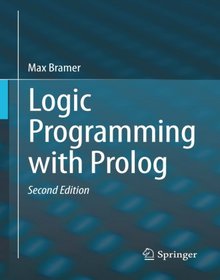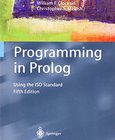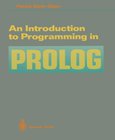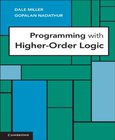Logic Programming with Prolog
2nd Edition

Book Details:
| Publisher: | Springer |
| Series: | Springer |
| Author: | Max Bramer |
| Edition: | 2 |
| ISBN-10: | 144715486X |
| ISBN-13: | 9781447154860 |
| Pages: | 255 |
| Published: | Jan 31 2014 |
| Posted: | Nov 19 2014 |
| Language: | English |
| Book format: | |
| Book size: | 1.27 MB |
Book Description:
Logic Programming is the name given to a distinctive style of programming, very different from that of conventional programming languages such as C++ and Java. By far the most widely used Logic Programming language is Prolog. Prolog is a good choice for developing complex applications, especially in the field of Artificial Intelligence.Logic Programming with Prolog does not assume that the reader is an experienced programmer or has a background in Mathematics, Logic or Artificial Intelligence. It starts from scratch and aims to arrive at the point where quite powerful programs can be written in the language. It is intended both as a textbook for an introductory course and as a self-study book. On completion readers will know enough to use Prolog in their own research or practical projects.Each chapter has self-assessment exercises so that readers may check their own progress. A glossary of the technical terms used completes the book.This second edition has been revised to be fully compatible with SWI-Prolog, a popular multi-platform public domain implementation of the language. Additional chapters have been added covering the use of Prolog to analyse English sentences and to illustrate how Prolog can be used to implement applications of an 'Artificial Intelligence' kind.Max Bramer is Emeritus Professor of Information Technology at the University of Portsmouth, England. He has taught Prolog to undergraduate computer science students and used Prolog in his own work for many years.
Download Link:
Related Books:
Programming in Prolog
Using the ISO Standard
5th Edition
Originally published in 1981, this was the first textbook on programming in the Prolog language and is still the definitive introductory text on Prolog. Though many Prolog textbooks have been published since, this one has withstood the test of time because of its comprehensiveness, tutorial approach, and emphasis on general programming applications. Prolog has continued to attract a great deal of interest in the computer science community, and has turned out to be a basis for an important new generation of programming languages and systems for Artificial Intelligence. Since the previous edition of Programming in Prolog, the language has been standardis...
An Introduction to Programming in Prolog
This book is an introduction to Prolog (rQgramming in ~ic). It presents the basic foundations of Prolog and basic and fundamental programming methods. This book is written for programmers familiar with other programming languages, as well as for novices in computer science, willing to have an original introduction to programming. The approach adopted in this book is thus based on methodological elements together with some pragmatic aspects. The book is composed of two parts. In the fIrst part the major aspects of programming in Prolog are presented step by step. Each new aspect is illustrated by short examples and exercises. The second part is composed of more developed examples, which are often games, that illustrate major aspects of artifIcial inte...
Programming with Higher-Order Logic
Formal systems that describe computations over syntactic structures occur frequently in computer science. Logic programming provides a natural framework for encoding and animating such systems. However, these systems often embody variable binding, a notion that must be treated carefully at a computational level. This book aims to show that a programming language based on a simply typed version of higher-order logic provides an elegant, declarative means for providing such a treatment. Three broad topics are covered in pursuit of this goal. First, a proof-theoretic framework that supports a general view of logic programming is identified. Second, an actual language called Prolog is developed by applying this view to higher-order logic. Finally, a meth...
2007 - 2021 © eBooks-IT.org



